When Charles Moffett left his job as a contemporary art specialist at a major auction house to launch his own exhibition space in 2018, he had no plan. Beyond an initial presentation—a solo exhibition of the work of Lily Stockman, an artist known for her biomorphically shaped abstract paintings and eye-catching palette—there was no script. Moffett had included her on his thesis show about a decade earlier.
“Honestly, I had no idea what I was doing and whether or not I was going to be good at operating a space, running a business, or working with artists in that capacity,” Moffett told Artnet News in a recent post. interview.
The space was on the third floor of a building between Broadway and Lafayette in the East Village. Things went well enough that after two years he decided to move to a slightly larger space further west on Canal Street. “I got a little more ambitious with the size and scale of the shows,” he said. Then, when the pandemic hit, he faced a moment of truth.
Moffett considered returning to work at an auction house or another gallery, wondering if maintaining the space was sustainable.
Instead, he decided to double down. He reached out to a core group of artists whose work he loved and knew he wanted to work with, a list that included Stockman, Alec Egan, Sam Bornstein, Maggie Ellis and Kenny Rivero. “I asked them if they were interested in being represented by the gallery,” Moffett said, and they opted to formalize the relationship.
After two more years on Canal Street, Moffett recently moved to a storefront at 431 Washington Street on the west end of Tribeca. The neighborhood has become a mecca in recent years for galleries launching new outposts.
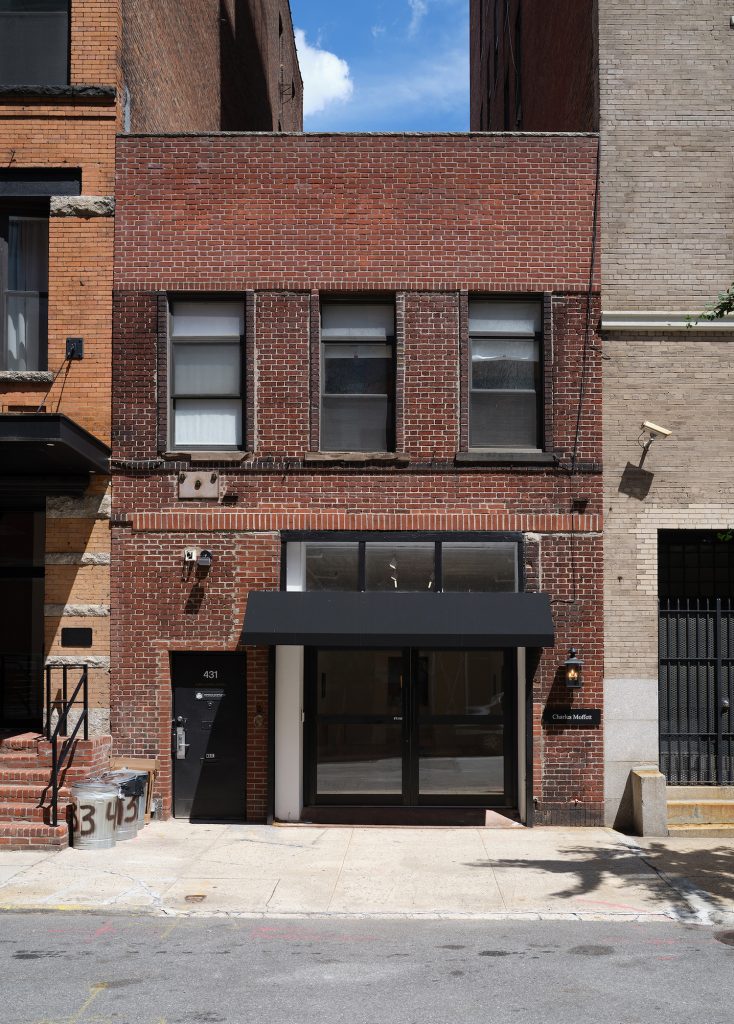
The facade of the Charles Moffett Gallery at 431 Washington Street in Tribeca.
Image courtesy Charles Moffett.
Now, about five years later, as the gallery gains a reputation for bustling booths and art exhibits, Moffett is embarking on something of a mini-expansion, taking over an adjacent second-floor space a few doors down at 437 Washington Street, which is conveniently owned by the same owner as the store front.
While Moffett adopts the “grow up or go” strategy often cited by dealers and art-dwellers alike, he does so on his own terms and with his typically thoughtful approach. “Rather than taking a slightly larger space, I tried to stick with something that was a little more in our comfort zone financially,” he said. “So here we are growing again.”
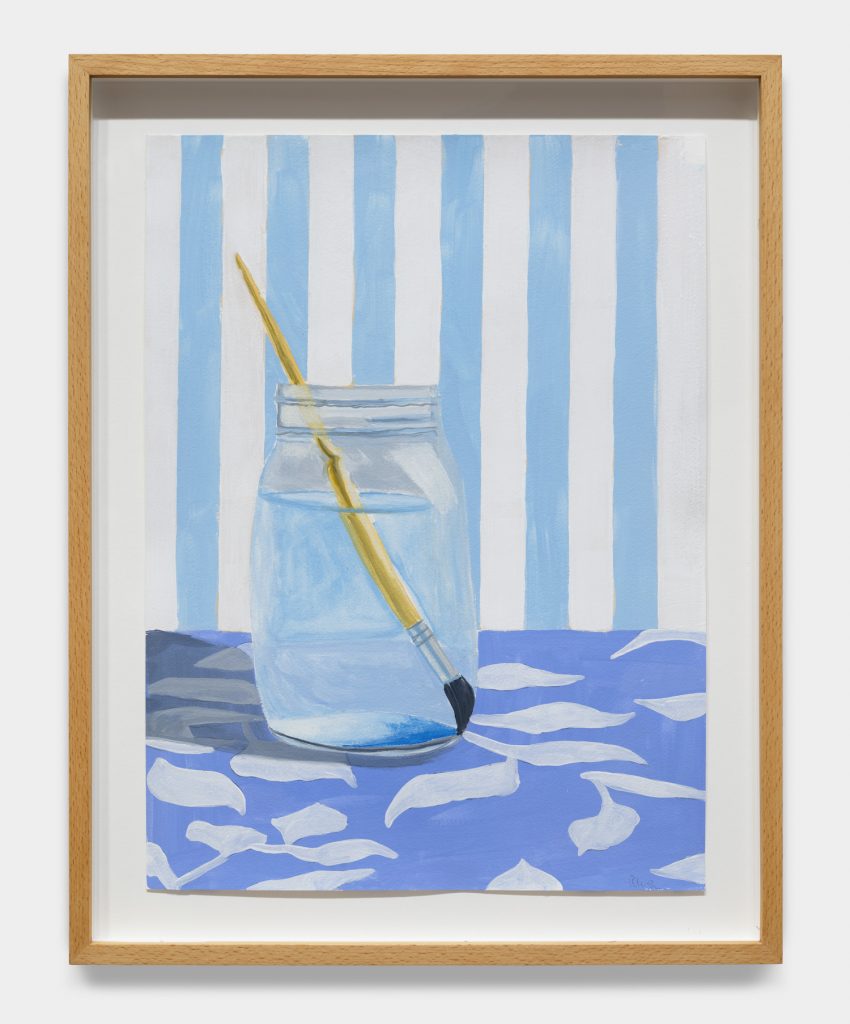
Alec Egan, Brush in water (2023). Photo by Daniel Greer. Courtesy of Charles Moffet.
The second location will span approximately 1,500 square feet, including an 800 square foot exhibition space dedicated to extended and focused artist presentations, as well as a private viewing room, art storage and offices for the gallery’s growing team. After a few months of intense overhaul – Artnet News received a pre-renovation guided tour in March – the space will open this Thursday, May 11 with a solo exhibition by Egan, the artist’s third with the gallery. It features ten watercolors and a smaller selection of oil paintings.
When Egan and Moffett met at a dinner party in 2018, the dealer was already familiar with his work, which he had seen at EXPO Chicago and NADA. “It sounds corny, but the integrity that showed in that first meeting and his curiosity. I said ‘yes, I will work with you. I signed up right away,” Egan told Artnet News in a phone interview.
Egan praised the dealer for their willingness to experiment, saying Moffett “helped push and activate parts of my practice that I was reluctant to enter. He wants to be your partner in everything you explore in your studio.
Noting that watercolors mark something of a turning point in his practice, Egan said, “It’s that kind of thing where most galleries would say, ‘No, we want this on canvas.’ I passed the idea to Charlie and he immediately said, “I think you should do it.”
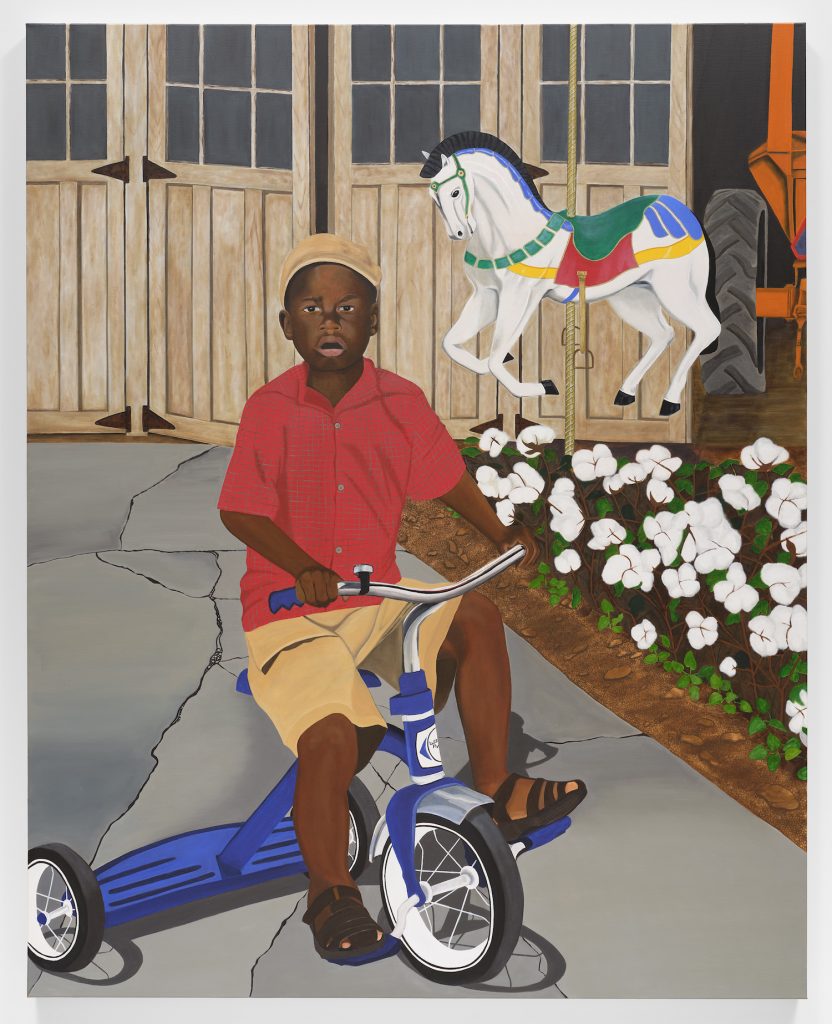
Keith Jackson, I have mine (2022). Collection of the Farnsworth Art Museum, Rockland, Maine. Museum Purchase, Lynne Drexler Acquisition Fund 2022. Image courtesy of Charles Moffett Gallery.
Another new addition to the gallery roster is Keith Jackson, a Kenosha, Wisconsin-based painter and former entrepreneur in his 50s who only recently began exhibiting in art galleries. Moffett offered him a solo exhibition at the 2022 Armory Show in New York and the booth sold out, including two paintings which were placed in the Farnsworth Museum in Rockland, Maine.
Jackson’s paintings capture seemingly ordinary yet profound memories of his childhood, including many depictions of his nine siblings. He will have his first personal exhibition with the gallery in 2024.
The artist met Moffett last year while speaking at various galleries. “One thing that stands out: he’s the only one who came to Kenosha to see me and do a studio tour,” Jackson told Artnet News in a phone interview. He praised the dealer not only for his success in placing Armory Show paintings in “good homes”, but also in general for being a direct shooter in all aspects of the business aspects – a comfort to an artist who does not only recently immersed himself in the sometimes ruthless artistic world.
“He keeps his word,” Jackson said. Whether it was the exact time Moffett was going to meet the artist at the Armory on VIP day, or the timing of museum acquisitions, or the timing of payment coming in, “there’s no circumvention”.
Another atypical advantage that the gallery offers to artists? The possibility of having health care through the gallery. This job is their livelihood, Moffett says, and they should have proper medical coverage. The gallery covers 50% of its artists’ premiums.
Moffett also carefully selects the artists he wishes to work with. He thinks of it as a track meet where each artist has “their own lane to race in,” he explained. “I never want anyone to feel like someone is going to stray from their path. I never want to have a list where someone says, “Oh, it makes sense that this artist would appear with Charles Moffett.”
As the gallery’s fifth anniversary approaches, Moffett is planning a group show at NADA that will feature the work of the stable’s ten artists, including the newly added Jackson. His art fair booths, including recent exhibits at NADA Miami and Felix in Los Angelescreated a substantial buzz.
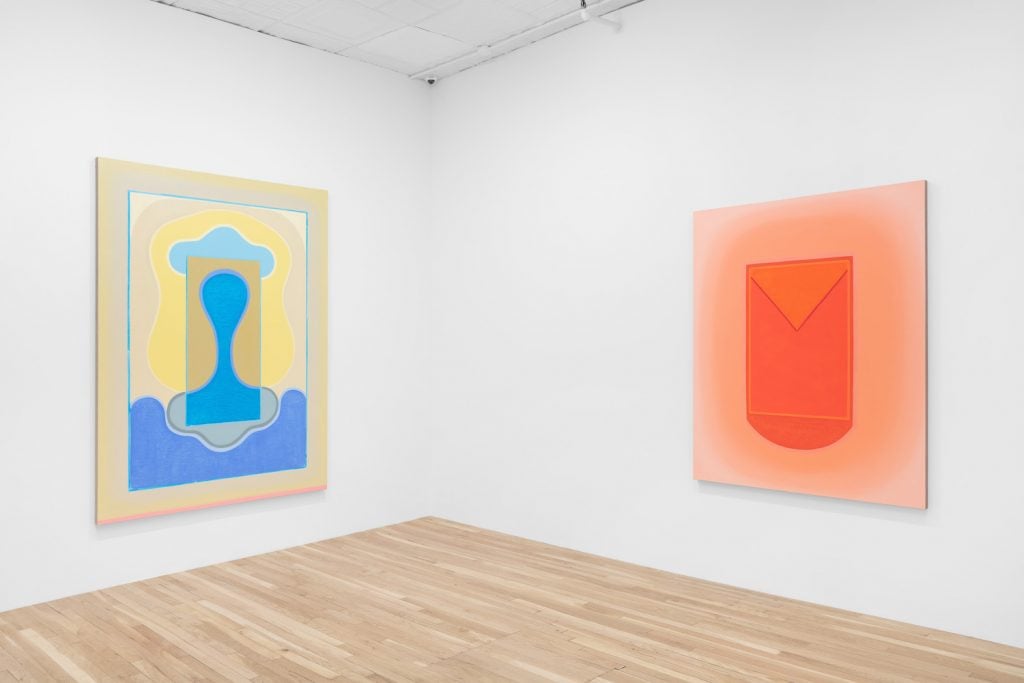
Installation view of “Lily Stockman: The Tilting Chair” at Charles Moffett Gallery in Fall 2022. Photo by Daniel Greer. Image courtesy Charles Moffett.
Moffett’s approach to fairs is a bit of an outlier, given that it’s a relatively young gallery and there are a lot of complaints about fair application and participation fees . But the compromise is worth it, he says. “At first I wasn’t very keen on getting into the fair cycle because of the costs involved, but it’s an important part of expanding artists’ visibility,” he said.
Stockman speaks effusively about Moffett and his management style, calling it “the real deal.”
“It’s extremely rare to find a gallery owner who lives for artists, who has the historical and academic background in art to know what he’s talking about, And keen market strategy to develop long and successful careers,” Stockman said. “Even in the program’s very difficult early years, Charlie would rather delay a sale than sell to an opportunistic collector; no one is so scrupulous or so shrewd.
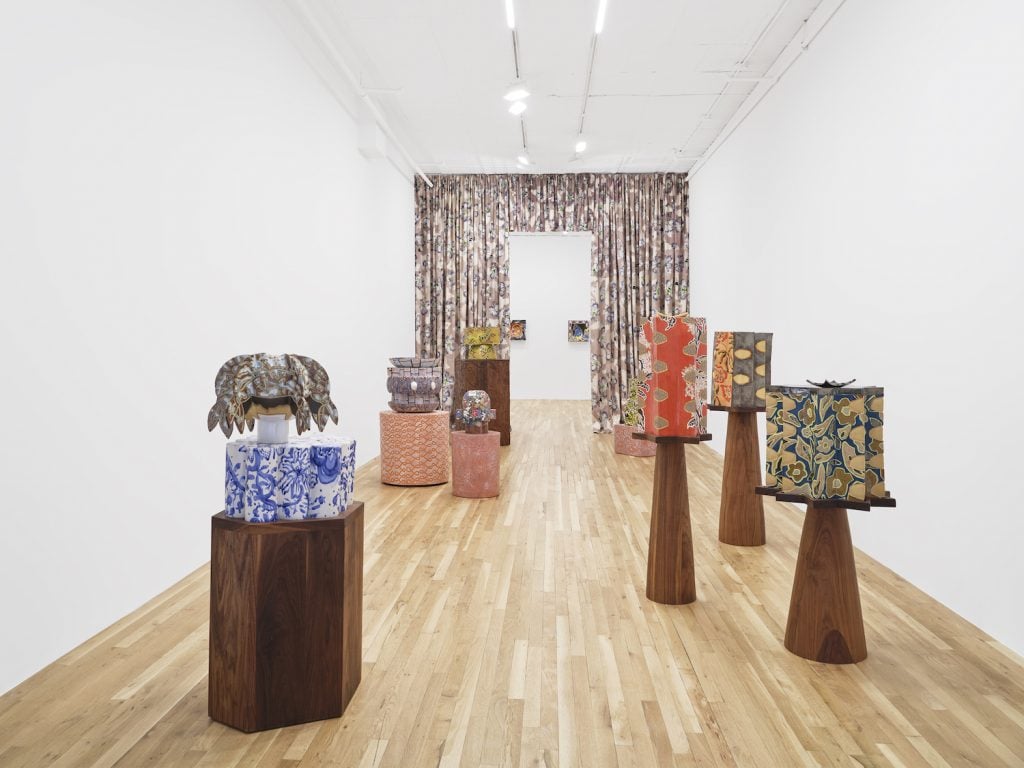
Installation view of “Bari Ziperstein: Set Patterns”, at the Charles Moffett Gallery. Image courtesy Charles Moffett.
Moffett helped Stockman realize the importance of disconnecting from the “noise” of the art world and the marketplace in order to focus on creating work, she said. He also stressed the importance of the “long game” and retaining some of his own work, even when demand exceeds supply.
Next up in the main space is a solo exhibition by Kim Dacres, a first-generation Jamaican-American artist, which opens May 20. Harlem-based Dacres, who has her studio in the Bronx, uses rubber from recycled tires to make sculptures that celebrate major influences on her life.
When we asked Moffett what philosophy and business practices appealed to artists and set him apart from others, he had a simple answer: “I talk time and time again with artists who are expecting payment or who aren’t expecting payment. no payment. get paid one, two, three, six months, a year later. It amazes me that this is even possible. I always told myself that the day I start paying late artists to finance the ambitions of the gallery is the day I close in. I don’t think I’m necessarily reinventing the wheel.
Stockman said she always jokes that the gallery’s slogan should be “Nobody pays faster”.
Follow Artnet News on Facebook:
Want to stay one step ahead of the art world? Subscribe to our newsletter to receive breaking news, revealing interviews and incisive reviews that move the conversation forward.
